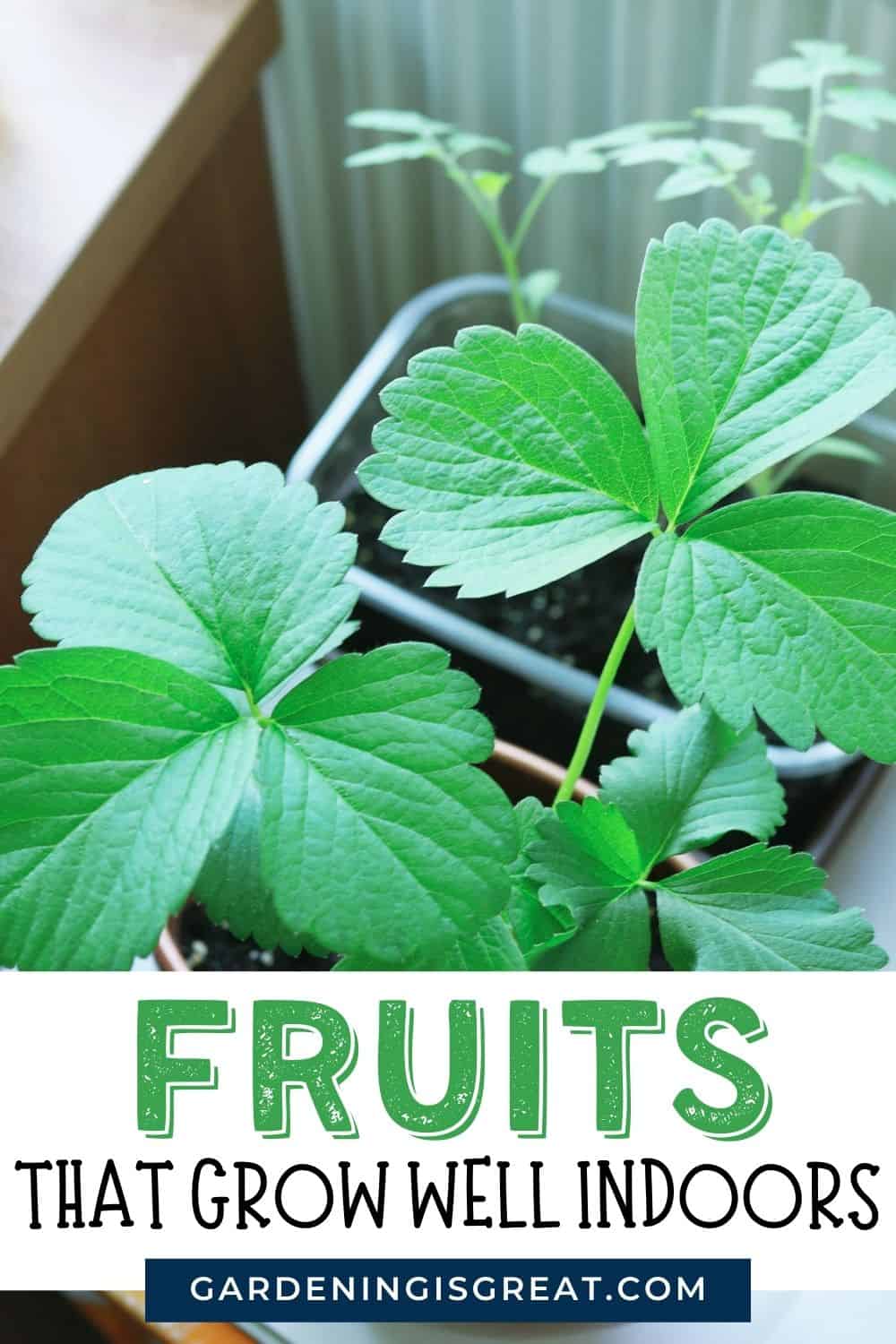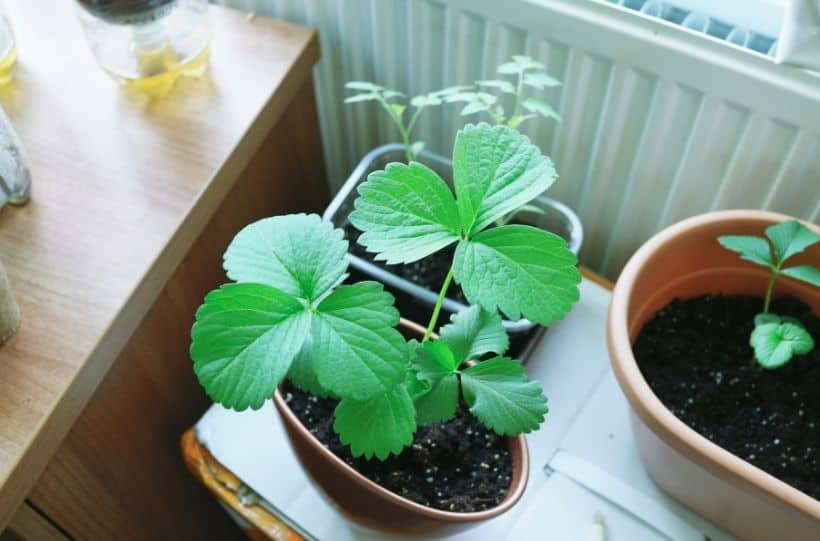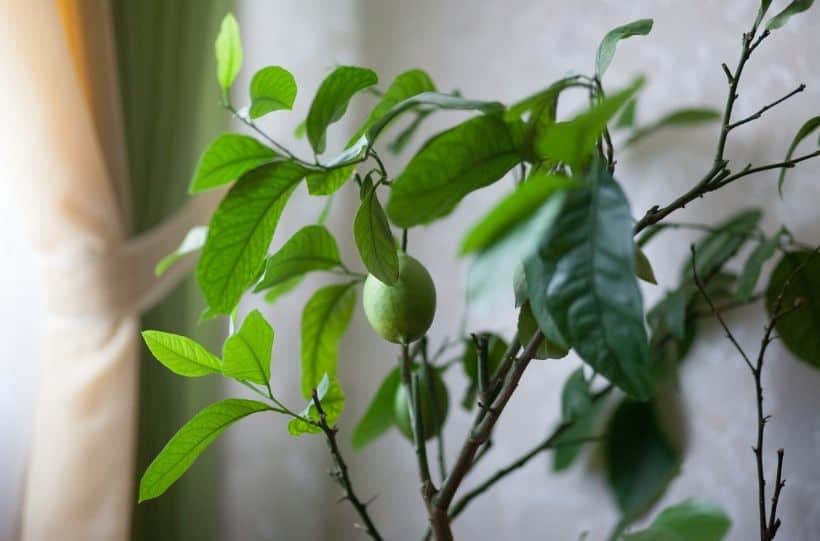4 Of The Best Fruit To Grow Indoors
This post may contain affiliate links. Please see the privacy policy for details.
When you are considering growing your own fruits and vegetables, growing them indoors might not have been your first thought. However, there are several benefits to growing indoors from temperature control to limited outdoor space.
Not to mention many crops do very well when grown indoors.
Fruit is one of those crops that grow incredibly well indoors. Growing fruit indoors helps to provide warmth, avoid heavy downpours, and create a controlled environment ideal for your plants to thrive.
However, not all fruit can be grown indoors often due to its size. This post covers 4 of the best fruit to grow indoors that will help brighten up your home, be a natural freshener, and provide you with easy access to fresh, homegrown fruits.

Top Tips To Successfully Grow Fruit Indoors
When grown outdoors, fruit plants are accessible to pollinators, direct sunlight, rain, and stability from the ground soil.
Whereas when planted indoors, these elements of what your fruit plants need can be tricky to provide. But, with careful planning ahead of time, fruit can successfully be grown indoors.
Access to Natural Resources
Many fruits, especially fruit trees, can grow very well in partial shade. Your plants don’t need to have access to direct sunlight all day, especially if you make use of artificial grow lights too. But, fruit does prefer warmer conditions so the temperature of your plant’s location is important.
Try to position your fruit plants indoors near a window where they can gain access to sunlight for a few hours a day. But ensure they are away from any drafts or areas that can experience sudden changes in temperature e.g. a radiator.
As your fruit is grown indoors, they also do not have access to rainwater. In containers, fruit can become dry very quickly. It is important to remember to water your fruit regularly.
Try to create a routine of checking the soil in your containers every couple of days. If the top two inches of soil feel dry, water your fruit plants. Remember to water directly onto the soil rather than the leaves to avoid fungus and for the water to reach the roots directly.
Pollination
Many fruits don’t require pollinating as they self-pollinate. However, certain fruits, particularly melon and fruit trees, require cross-pollination.
When planted outside, this isn’t a problem as pollinators such as bees and hummingbirds will pollinate your fruit plants for you. But when inside, other than opening the window and hoping the smell of your fruit is enough to encourage pollinators to visit, it’s highly unlikely natural methods will work.
If you are growing fruit that requires cross-pollination, you need to get hands-on. Using a delicate tool such as a small paintbrush, you need to take pollen from the male flowers and place it onto the stigma of the female flowers.
A male flower contains a stamen and anther, whereas the female flower will only contain a stigma.
4 Best Fruit to Grow Indoors
1. Banana Plants
Due to their size, dwarf banana plants are the best choice when selecting a banana plant to grow indoors.
As they are tropical plants, unless you live in an area with similar outdoor conditions, then growing them inside is best. You can mimic a warm environment to help your banana plant thrive.

Indoor banana plants need access to well-drained soil and plenty of water. Allow your banana plants to dry out first before watering again to minimize the risk of root rot.
Being a tropical plant, this fruit tree also needs at least 12 hours of direct sunlight when grown indoors. If this is hard to achieve due to your location, you could also use a grow light instead.
As they produce large leaves, the leaves can gather dust over time. They will need wiping regularly to remove this dust otherwise it can lead to diseases.
2. Strawberries
Strawberry plants are an excellent fruit to grow indoors. They are classed as one of the easiest fruits to grow anyway. Growing them indoors helps you to have easier access to them and avoid them being eaten by pests!

One thing to consider first is where you want to grow your strawberries. They need spacing out to help avoid the spread of diseases and mold. Strawberries grow well in pots, hanging containers, or even on windowsills.
Something else to consider is that strawberries require at least 6 hours of sunlight each day. If your home is limited in the amount of sunlight it receives, selecting a windowsill might be the best option for your strawberries.
When planting, strawberries do not have large roots so can be planted in shallow containers. They do however need well-drained soil and checking daily for water. If the topsoil is dry, add 1-2 inches of water.
3. Blueberries
Similar to strawberries, blueberries are another plant that thrives when grown indoors and are relatively easy to maintain.
Blueberries require a deep container due to the length of their roots. Choose a pot at least 18 inches deep.
Unlike many fruit plants, blueberries prefer to be planted in acidic soil. This is a really important step to remember as blueberries will not thrive when planted in standard compost or potting soil.
They also grow best when receiving 6-8 hours of sunlight each day. The light helps to encourage your blueberry plants to generate more fruits.
One point to note is that blueberries are a cross-pollinating fruit. The best chance for your plant to produce fruit is to plant two different varieties of blueberries near each other.
Although many varieties can self-pollinate, encouraging cross-pollination can lead to a better yield.
4. Lemons
Lemon trees are especially popular to grow indoors due to their bright colors and sweet-smelling flowers.
Although it can be challenging to grow lemon trees outdoors if you do not have the right climate, growing lemons indoors is relatively simple.

Lemon trees require excellent drainage and soil that remains slightly moist. They need a deep container to allow for root growth.
All varieties of lemon trees need ample sunlight. Around 8 hours of sunlight is ideal, however, you can use grow lights if this amount of sunlight is difficult for you to achieve. They also require a consistent temperature so are best placed away from cold drafts or increased temperatures near radiators.
These popular fruits are some of the best fruits to grow indoors. They don’t require as much space as larger fruit trees and bushes. Plus, they are relatively easy to maintain and will produce fruit in years to come.
Following the top tips above for each fruit will help your plants to produce even more each season. Make sure to check the variety you are purchasing before planting, to confirm you have enough space indoors for it to grow and mature.
And if you are looking for more on growing your own fruit, check out these next:
